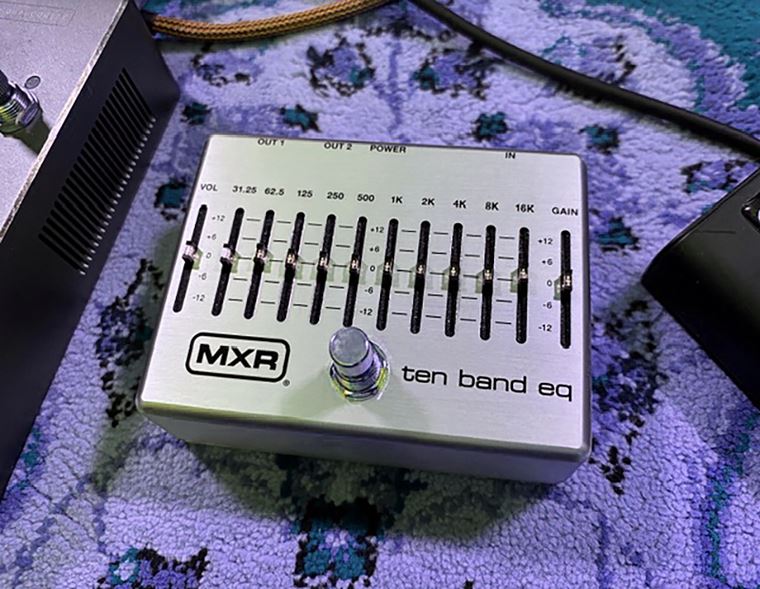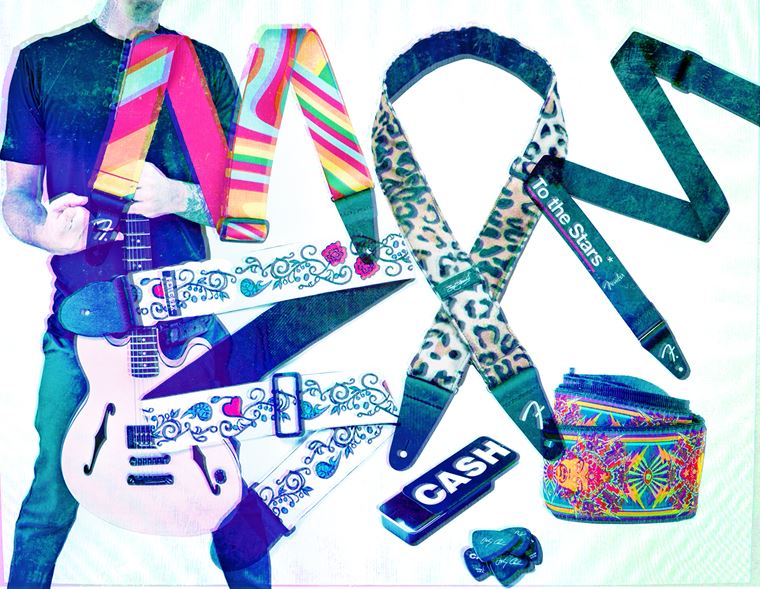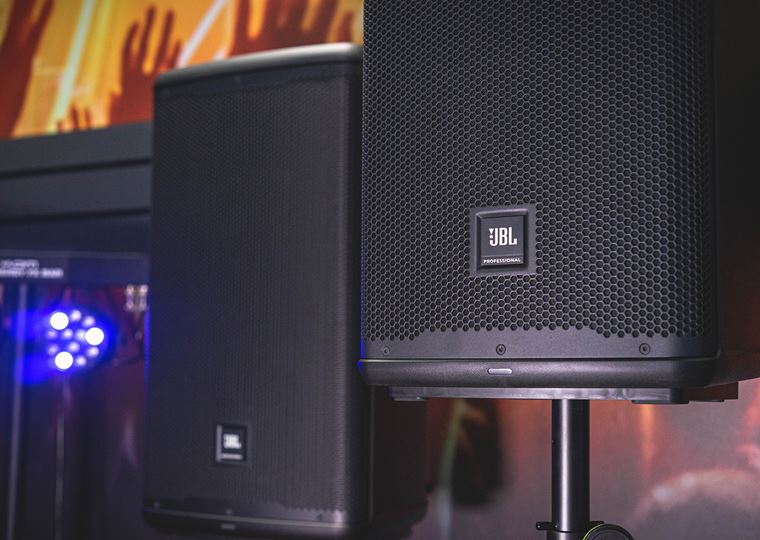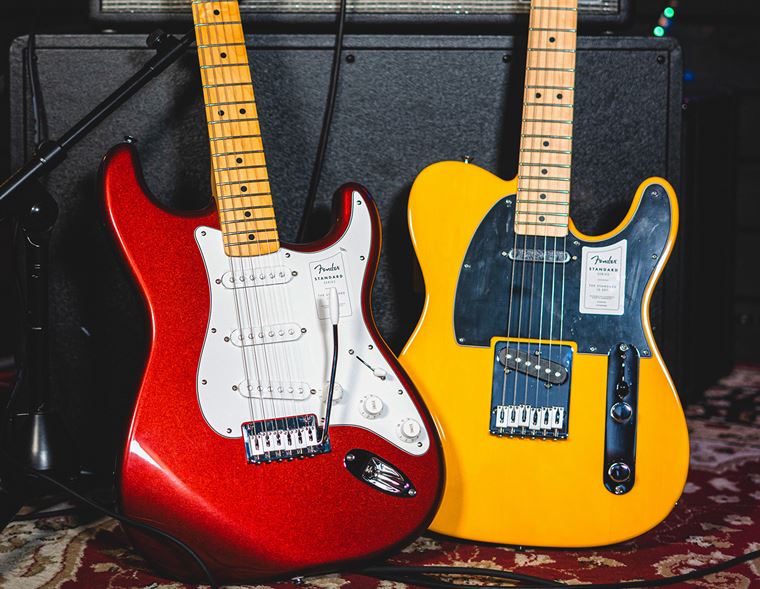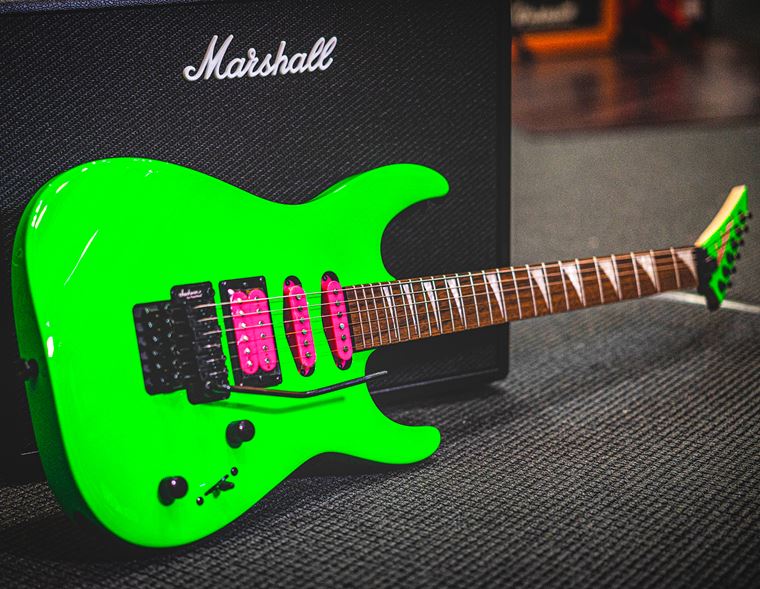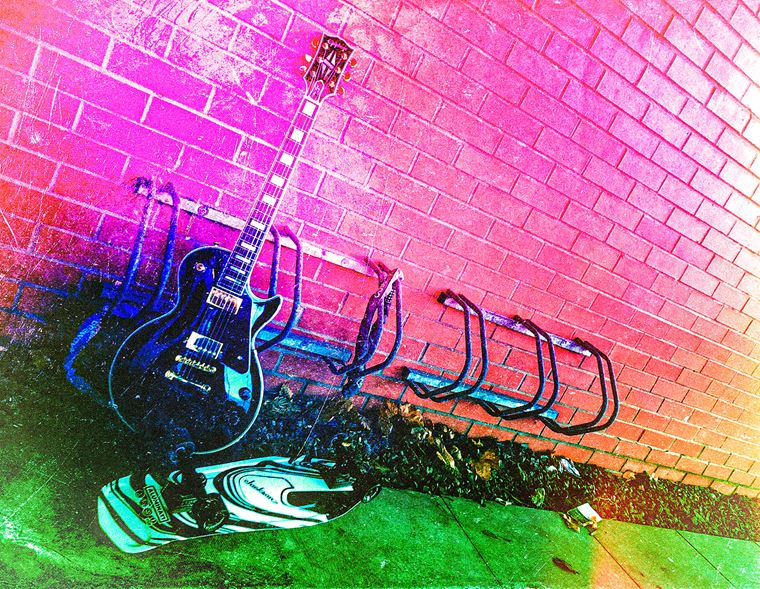FENDER Custom Shop Vs GIBSON Custom Shop: Who is the BEST at Ageing?
Published on 23 September 2024
It’s the return of the relic debate!
At guitarguitar, we’ve addressed this area of the market before (see my relic blog) but today, I wanted to turn a critical eye upon the two biggest brands in our world - Fender and Gibson - to see how they fare against each other in the relic stakes.
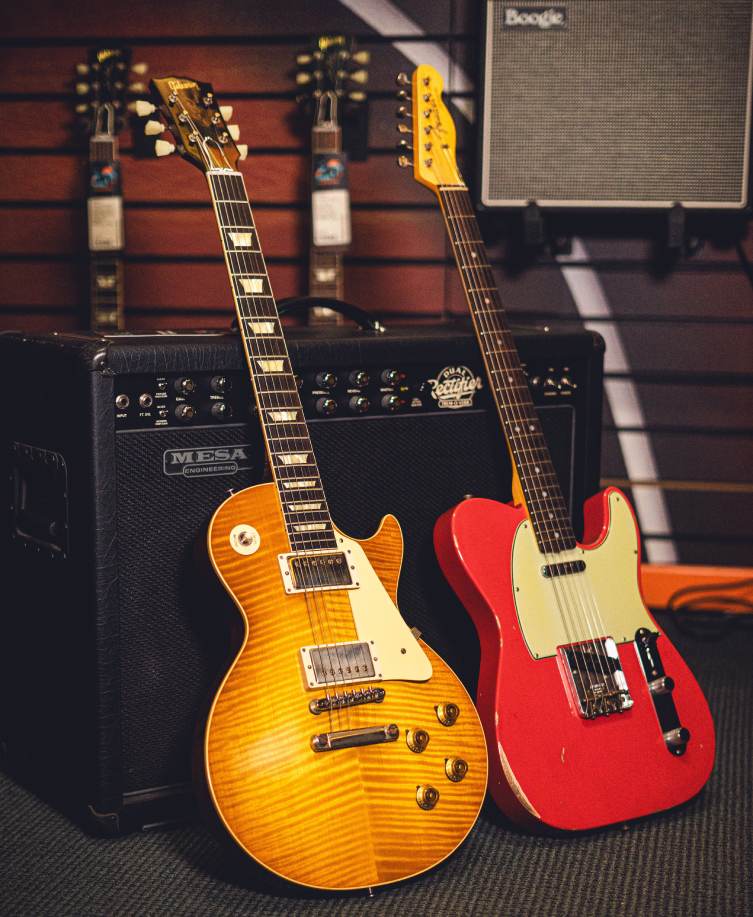
Are you a fan of aged guitars? That’s actually something I won’t be giving much consideration to here, actually. If you don’t like your axes pre-worn, then this blog is perhaps not for you! If, however, you love and appreciate the time and skill taken to properly age a brand new guitar, then continue with me as I investigate both Fender and Gibson’s Custom Shops, and assess their relative merits.
Do I have a favourite? Well, you’ll just have to read this and find out!
Contents
Things About Old Guitars That Don’t Get Reliced
Good Relicing and Bad Relicing
Why Do Pre-Aged Guitars Exist?
Fender Custom Shop
Fender were the first brand on the scene to fully comprehend the potential in a ‘pre-dinged’ instrument. As the legend goes, back in the early 1990s, Keith Richards took delivery of some Fender Custom Shop touring Teles and complained about their pristine newness. Words along the lines of ‘bash ‘em up a bit and I’ll play ‘em’ are apparently what Keef told the builders, who duly took to duffing up their own creations in order to age them.
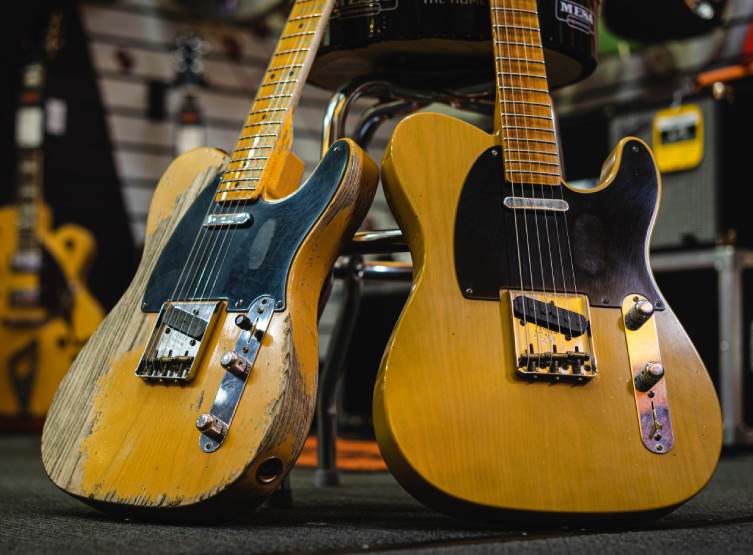
That, in fact, is NOT the true story. Keef had nowt to do with it. Two guys - JW Black and Vince Cunetto - are responsible for it. Cunetto was making great replicas - so good in fact that Fender felt they were close to being counterfeit, though instead of calling their lawyers, they offered him a job. Fender had already been adding fake wear to repairs on old guitars in order to make the repair work look seamless. JW Black was a Fender employee, and he saw the massive potential in offering pre-worn Fender guitars to a wider market. He got Cunetto to do this en masse. From a quiet start, the enterprise expanded (Fender sent him parts to relic and then send back) and for a number of years, that was how it was done.

Don Was, a musician and producer who was working with the Rolling Stone in the mid 90s, took delivery of some touring guitars and it was actually he who asked for the guitars to be duffed up a bit prior to going on stage. This, then, must be the genesis of the Keith Richards tall tale.
This became a marketing concept known as a Fender ‘relic’. You know the rest. Today, it’s mainly the USA Custom Shop guitars which have relic work carried out on them, with only occasional ‘Road Worn’ (they are keeping the terms distinct, even though they are the same thing) guitar emerging from Fender’s Ensenada facility in Mexico.
Fender offer various stages of wear, from ‘Journeyman Relic’ which means not much damage, to ‘Ultimate Relic’ for which I’d refer to the likes of Rory Gallagher’s Strat. There are loads of stages in between too. I think it’s fair to say that nobody has championed the relic concept as much (or as successfully) as Fender.
There are are number of stages to how reliced a Fender can be, and whilst this has changed a little over the years, it’s currently this, from no dings to lots of dings:
- NOS
- Closet Classic
- Lush Closet Classic
- Journeyman Relic
- Relic
- Heavy Relic
Last year I had the good fortune to speak with Fender Custom Shop Master Builder Paul Waller, and he is generous with his insights into the day-to-day running of the Custom Shop. Check it out here:
Gibson Custom Shop Murphy Lab
The big difference between how Gibson and Fender approach their relic work is basically Tom Murphy. Well known for his expert - and quite pioneering - ageing-work, he is now head of his own workshop, and Gibson Custom Shop pass him finished guitars to age: Tom doesn’t build the guitars; he finishes them with his various processes, transforming a pristine new guitar into an uncanny vintage replica.
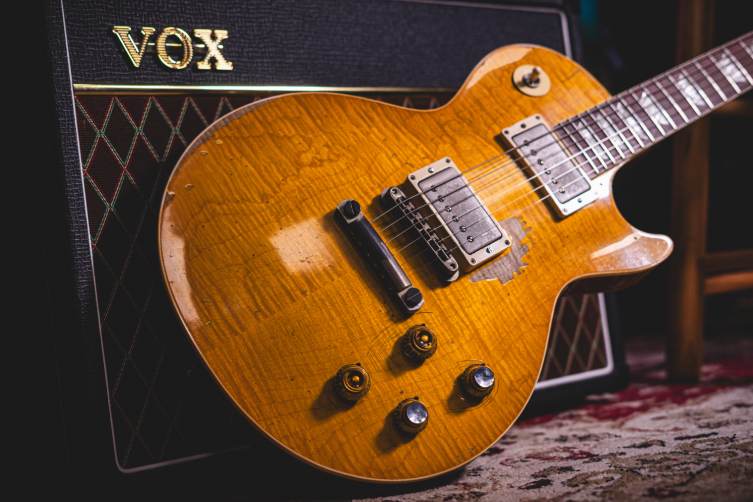
Now, Gibson’s Custom Shop used to be called the Art & Historic department, and this was really the first time they had really taken stock of the demand for vintage-correct instruments. Initial creations were replicas of the expected 58-60 era Les Paul Standards, and it wasn’t actually until just before the millennium that they started pre-ageing some of their guitars. This occurred after seeing the work done by an individual called Tom Murphy, who’d been experimenting with ageing techniques in his garage, to quite an impressive level of success. Tom’s Gibson day job was actually to correct the little repairs and finish imperfections that occurred during the fabricating process. He’d remove scars from new guitar builds by day, and expertly add scars to guitars at night! Private customers (like Jimmy Page lol) would commission Tom to age their Gibson guitars, and when this got back to Gibson, they started using him for limited runs of new pre-aged guitars.
It was quite a rare and exclusive thing until Tom parted ways with Gibson in 1994. As you may know, there was a big shake-up with Gibson a number of years ago: a new management team and a new focus. Part of that was to do the sensible thing, which was to finally double down on Murphy and put him in charge of his own workshop, the Murphy Lab. Nowadays, there is a huge range of Gibson instruments available, aged in four increasingly severe level of distress:
- Ultra Light Aged
- Light Aged
- Heavy Aged
- Ultra Heavy Aged
Here's a conversation I enjoyed with Tom himself a little while ago, where he goes into detail about elements of the process...
Who is Best?
Now is that part where I have to come clean and admit to the clickbait nature of the article’s title. Which is best? Well, in what sense? Whilst there is definitely some very unconvincing relic work out there - some selling for very high prices indeed - I’d not lump either Fender or Gibson in with either of those. Indeed, the world’s top two guitar brands are also two of the very best at ageing.
Both parties are relatively secret about their methods, and whilst guesswork will doubtless bear fruit, it’s not really my place to speculate. I do know that there is a mixture between hand tooling and certain extra ‘ingredients’ used to enhance that authentic aged look by both companies.
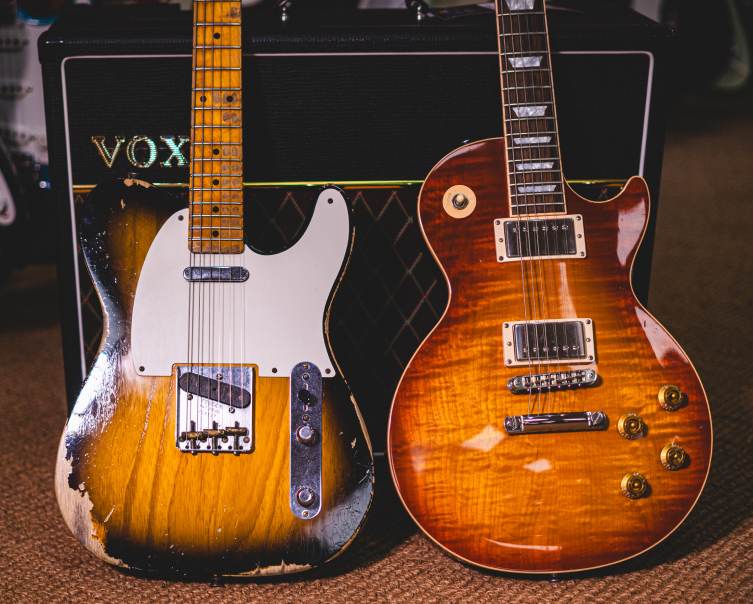
Checking
Clearly, sanding is a big part of the story, and more so with Fender than Gibson. Both companies have a house style when it comes to their instrument builds, and this extends to the ageing work, too. For instance, ‘checking’ (the fineline criss-crosses that occur across the body) are prevalent on both but more so on Gibson guitars. Why? Historically it is because Gibson guitars tend to have carved or arched tops, so there are more curves and less straight planes, and when finishes get old and dry, the cracking reacts more with those curves.
Checking is all over Fender’s guitars as well, but it typically requires a closer look to identify. If you’re inclined to say that that makes it inherently ‘better’, I’d have to both agree and correct you. Vintage Fenders DO look more subtle in this regard, and vintage Gibsons are very often much more obviously checked. I’d say that whilst both brands achieve different results here, both are quite in keeping with the expectations of their brand.
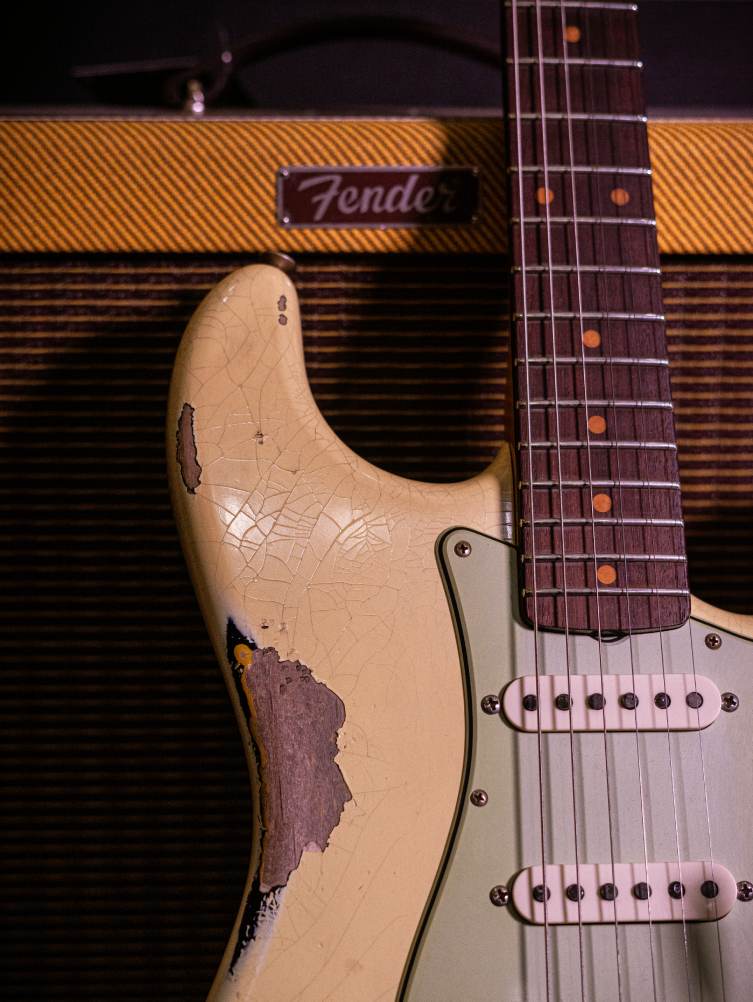
Scratches
Scratches are a contentious issue. This is one area in which I think that Fender can be held accountable for being slightly over-zealous from time to time. Now, I actually love heavily reliced Strats and Teles, but there are often areas of damage that are hard for me to believe would occur in real life. This is personal opinion and observation of course. I’ve been lucky enough to have a number of vintage Fenders and Gibsons in my hands over the years, but that hardly makes me an unimpeachable authority on all types of guitar damage that occurs in the world! Even so, seeing loads of dinks and scratches close to, say, the back of the bridge or inside the upper horn of a Strat strikes me as being areas that never see much contact at all, so why all the wear?
Now, before you say ‘look at Rory Gallagher’s guitar’, I hear you! His was/is like that and I expect the wear on that wonderful instrument was all earned during the call of duty. God knows how though! Here’s another way to put it: if you take Rory’s Strat as a blueprint of actual damage, then Fender’s relic work is spectacularly accurate.

Levels of Damage
Fender Journeyman Relics are hardly relics at all, to the point where I sometimes wonder why they bother: why not go further? That’s when I see the subtle detailing and how that overall effect really improves the look and vibe of the guitar. You just need to compare it with a non-elic of the same colour to see what I mean.
The other side of that coin would be the Heavy Relic examples, and Ultimate Relics, when they appear from time to time. These are pretty brutalised, and it’s fair to say that most noon-relic guitars built today will never accrue that amount of real-life damage. Why? Well, conditions are different: smoking, storage temperatures etc all contribute, but most of today’s guitars use polyurethane finishes, which is great at stopping this kind of damage. It simply won't happen to any guitar that isn’t finished in nitrocellulose and then dragged in and out of hot, smoky clubs for 40 years.
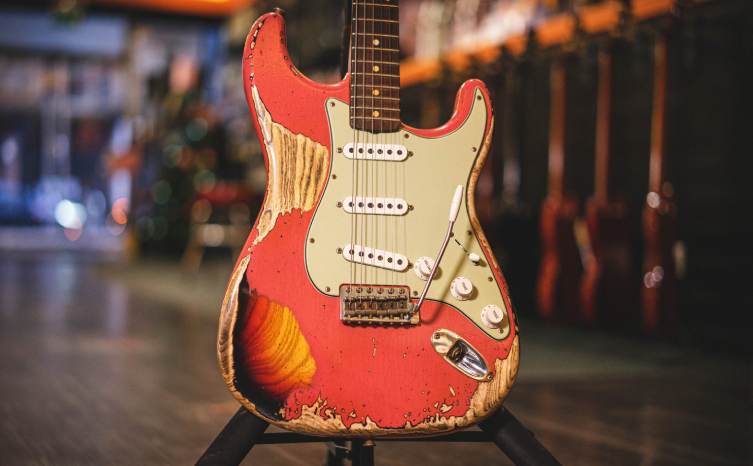
Saying all that, I used Rory Gallagher’s heroically abused Strat as proof of authentic ageing, and if you were to grade that as a Fender Relic then it would actually go beyond the Ultimate Relic level of damage, so Fender aren’t actually going too far with these at all, it’s just a matter of us hardly ever seeing guitars quite as battered as this. They do exist though!
Gibson on the other hand, are altogether less intense with their ageing work. Even their Heavy Ageing models are relatively subtle, though it does depend on the model. Up close in the flesh, they are pretty spectacular, but always showing a sense of sensible restraint. The ES models tend to see the most ‘battle damage’, it seems to me, and the finish is worn away in realistic areas such as where one’s forearm comes into contact with the body, or ‘buckle rash’ on the back. Whether you wear a belt buckle or not, this area gets worn away eventually, and I can personally vouch for that!

Things About Old Guitars That Don’t Get Reliced
There are some time-honoured signs of wear and tear that neither company incorporate into their builds, for reasons of practical integrity. These guitars are supposed to appear, feel, play and sound like lost vintage classics, but they shouldn’t come with any of the actual problems such instruments may have! That would be crazy!
To that end, you won’t find any Fender Custom Shop Relics with shims in the neck, or the infamous ‘ski jump’ shape appearing in the neck pocket area. Even though this is almost an inevitability for this style of guitar, it’s an unfortunate byproduct of the design and not something that should be encouraged prematurely.
In a similar way, there are no headstock 'fixes' simulated on Gibson guitars, despite ‘decapitation’ being a relatively common injury suffered by Gibson guitars. These types of wear and tear are seen as devaluing the instrument, so why build them into a new one? It seems silly to snap a new neck in the name of authenticity, so I'm glad Gibson (or anyone else!) don't ever do this!
It’s an interesting subject, actually: which types of wear and scratches add value, and which detracts and devalues? Why are cosmetic imperfections fine on an expensive relic guitar but unacceptable on a pristine non-relic? I expect you have an opinion on this, but it seems to me that intention plays a big part: these guitars are deliberately and artfully aged to closely resemble worn originals; a brand new guitar with an accidental scratch, therefore, is an unfortunate accident. Both situations involve ‘marked’ guitars, but the intention dictates an entirely different context.
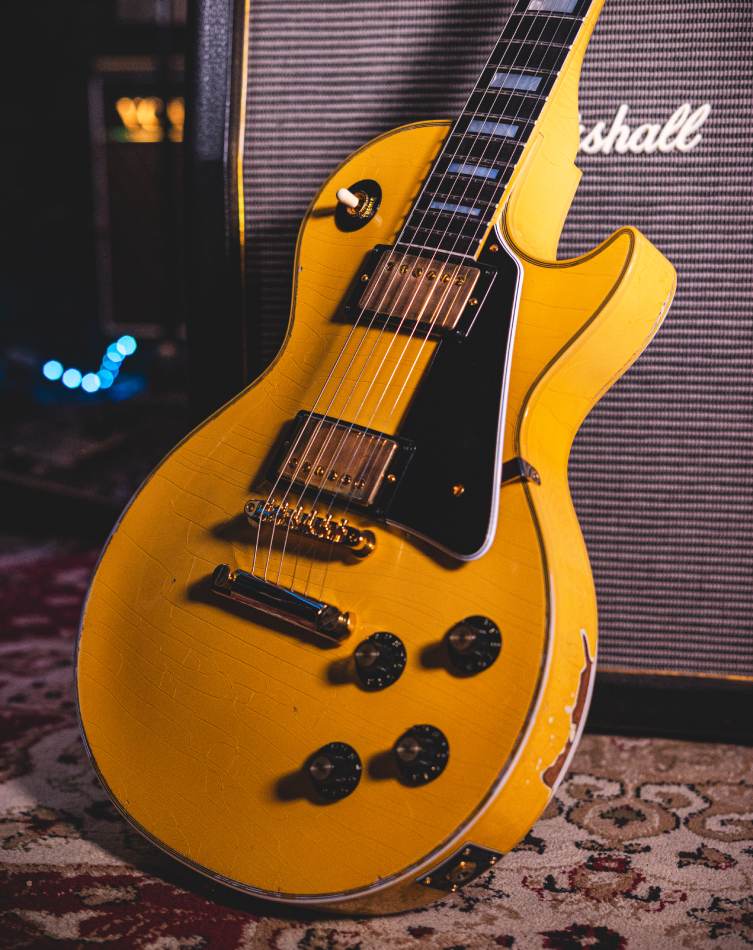
Good Relicing and Bad Relicing
As I draw this particular article to a close, I sit like Jerry Springer (remember him?) and ponder a few points with you. Fender effectively invented relic work in the 90s and have remained one of the best at it. Gibson have waited longer to get officially onboard, and their relic work is relatively different, due to how their guitars are built, and indeed how they wear. Both companies are excellent at it, and both do charge a fair price for this work.
Some other companies - boutique and larger manufacturers alike - offer aged guitars that really don’t look great at all: wear in strange places, ‘uniform’ levels of damage rather than graduated areas with more or less wear, unrealistically worn metal parts etc etc. I won’t name these companies because it’s ultimately a matter of opinion, really, isn’t it?
Why Do Pre-Aged Guitars Exist?
One other thing to take away here is the intention of an aged guitar. What is the point? Well, it’s not to pretend that you’ve had the thing for 60 years, let’s put that away. It’s about acknowledging that there is something very pleasing and special about a ‘broken-in’ guitar: the super smooth feel of a neck that’s had thousands of hours of play; the sensation of a checked and scratched finish under your right hand palm…all of these sensory things accumulate and give the instrument character. Pre-aged guitars simply offer this straight away, with no need for decades and decades of wear to accrue before it’s finally how you like it.

Remember, people who own actual vintage guitars are understandably apprehensive about taking such instruments out to gigs and tours. They are heirloom pieces that cost many tens of thousands of pounds, not even taking into account their historical relevance. Having an option of a replica that offers the same experience without the 50k price tag is a very tempting - and sensible - thing to consider.
Finally, there’s this. Not all vintage guitars are amazing. I’m sorry to say it, but both Fender and Gibson have made less than stunning guitars in the past, and I know this because of first hand experience. I’d actually go as far as to say that, from a player’s perspective only, current Fender Custom Shop and Gibson Custom Shop guitars are at least as good as vintage specimens, if not better.
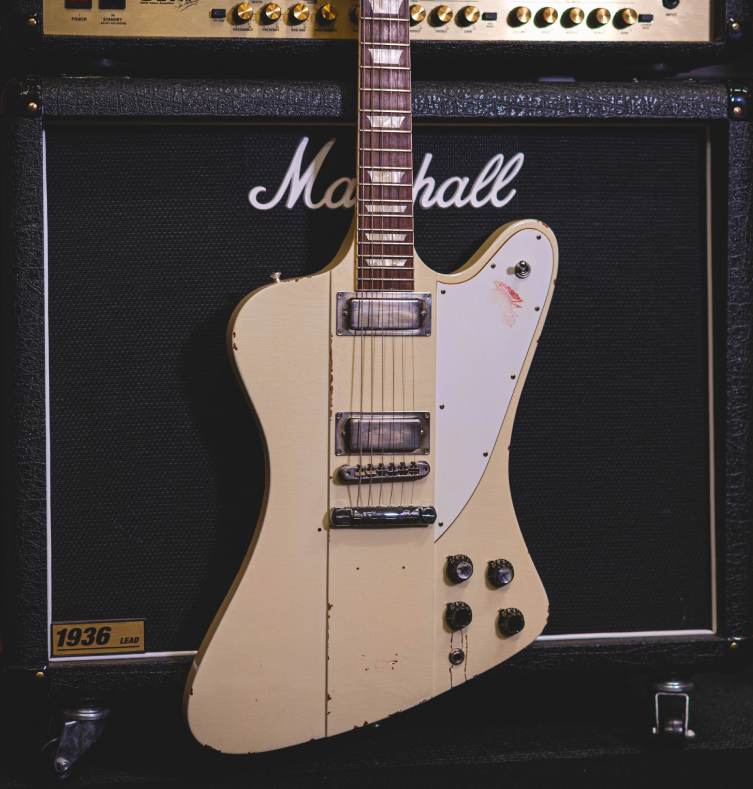
At this level, these new pre-aged guitars are investments, too. They are fantastic instruments and you’ll have a wonderful extended experience owning one, whichever side of the Fender/Gibson coin you prefer to land on.
So, Fender Custom Shop Vs Gibson Custom Shop: which is best?
Neither.
Both!
Click for our Fender Custom Shop Instruments
Click for our Gibson Custom Shop Instruments



